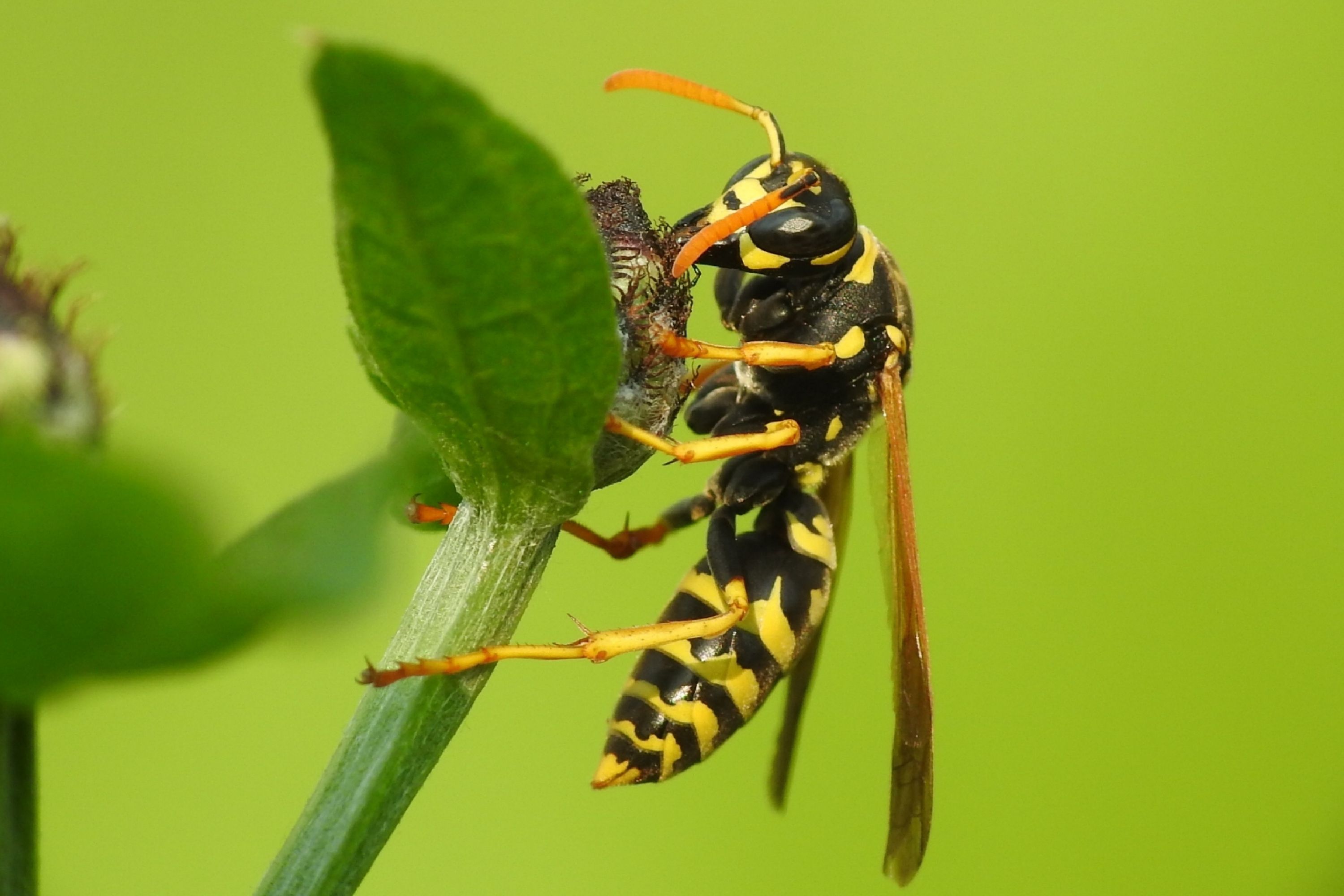Saxon wasp
(Dolichovespula saxonica)

Description
Dolichovespula saxonica, also known as the Saxon wasp, is a common social wasp found in the palearctic region, specifically in large parts of Europe and in northern and central Asia. Although originally from continental Europe, D. saxonica has since colonised Britain, mainly in the south and east,but has been recorded as far north as East Lothian, Scotland. Most of their nests are above ground in trees and bushes, but they can also be found in buildings. Due to the proliferation of nests in urban areas and near residential homes, D. saxonica can be a pest for people. As a result, many human interventions are in place to remove Saxon nests. D. saxonica has been found to use chemical signaling in a lot of behaviours, such as alarm calls, fertility cues, and chemical trails. The Saxon wasp is part of the family Vespidae, a large family of varied wasp species. Within the Vespidae is the genus Dolichovespula, which is derived from the Greek word “dolikhos,” meaning “long.” This describes the characteristic long face found within the genus, as opposed to the short and round faces found in the genus Vespula. Dolichovespula contains 18 species, including D. saxonica, and most are found throughout the Northern Hemisphere. Dolichovespula is closely related to Vespula, and species from both genera constitute the yellowjackets. Many of the species within Dolichovespula choose aerial nest sites, though most illustrate flexibility in nest site locations. This differs from the genus Vespula, whose members often make subterranean nests. Dolichovespula species typically have mature colonies of about a thousand cells with about two thousand adults and a colony cycle that lasts three to five months. D. saxonica is similar to its yellowjacket relatives with the black and yellow stripes on its body. However, the Saxon wasp is larger than most of its relatives and can also be identified by the three dots on its head. The Saxon queens are largest with a body length ranging from 15–19 mm (.59–.75 in), while the males range from 13–15 mm (.51–.59 in) and the workers from 11–15 mm (.43–.59 in). The male body consists of a copulatory casing at the end of their gaster and seven gastral tergites – hardened plates, or sclerites that are divided on the dorsal side of the body – and sternites, which are sclerites on the ventral side of the thorax. On the other hand, the female has six gastral tergites and sternites and a sting at the end of their gaster.
Taxonomic tree:







